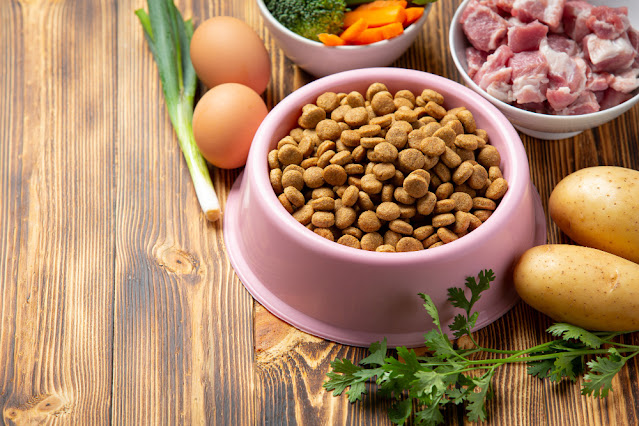The Ultimate Guide to Transitioning Your Dog to Fresh Dog Food
witching your dog to fresh dog food is one of the best ways to improve their health and well-being. Fresh dog food is packed with nutrients, vitamins, and the wholesome goodness that commercial dry kibble often lacks. But how do you make the transition without causing digestive issues for your furry friend? This ultimate guide will walk you through the steps and provide essential tips to help you smoothly transition your dog to fresh dog food.
Why Fresh Dog Food is a Game-Changer
Before diving into the transition process, let’s explore why fresh dog food has become so popular. Fresh dog food is made from real, whole ingredients such as lean meats, vegetables, and grains. Unlike traditional kibble, which can be filled with preservatives, artificial colors, and low-quality fillers, fresh food is minimally processed and often tailored to your dog’s specific needs. This type of diet can help improve digestion, energy levels, and coat health. Moreover, fresh dog food often results in fewer allergies and a healthier immune system for your pet.
Preparing for the Transition to Fresh Dog Food
Switching to fresh dog food isn’t something you should rush. Just like humans, dogs can experience digestive discomfort if their diet is changed too quickly. To prevent this, preparation is key. Start by selecting a high-quality fresh dog food brand that meets your dog's nutritional needs. Research brands that use whole, unprocessed ingredients and avoid those that contain fillers or unnecessary additives. Once you’ve chosen the right product, you’re ready to begin the transition.
Gradually Introducing Fresh Dog Food to Your Dog’s Diet
One of the most important steps when transitioning your dog to fresh dog food is to do it gradually. Sudden changes in diet can upset your dog’s digestive system, causing diarrhea, vomiting, or other gastrointestinal issues. A gradual introduction helps their body adjust to the new food while minimizing any potential discomfort.
Here’s a simple guide to follow:
- Days 1-3: Mix 25% fresh dog food with 75% of your dog’s current food.
- Days 4-6: Increase the ratio to 50% fresh dog food and 50% old food.
- Days 7-9: Move to 75% fresh dog food and 25% of the old food.
- Day 10 onwards: Fully switch to 100% fresh dog food.
This slow approach allows your dog’s digestive system to get used to fresh ingredients while maintaining stability.
Signs Your Dog is Adjusting Well to Fresh Dog Food
During the transition, keep an eye on your dog’s behavior and digestion. Some common signs that your dog is adjusting well to fresh dog food include improved stool consistency, increased energy, and a shinier coat. You may also notice that they drink less water since fresh dog food typically contains more moisture than dry kibble.
However, if your dog experiences prolonged digestive upset (such as loose stools or vomiting) after several days, it may be a sign that you’re moving too quickly. In that case, scale back the amount of fresh dog food and slow down the transition process.
Troubleshooting Common Issues When Switching to Fresh Dog Food
While most dogs transition smoothly, some may face challenges. Here are a few common issues and how to address them:
- Refusing the new food: If your dog is hesitant to try the fresh dog food, try warming it up slightly to enhance the aroma. Some dogs are more inclined to eat food that smells stronger.
- Upset stomach: If your dog’s stomach seems upset, slow down the transition. You can also try adding a small amount of plain boiled chicken or pumpkin to the fresh dog food to help with digestion.
- Weight gain or loss: Monitor your dog’s weight during the transition. Fresh dog food is nutrient-dense, so your dog may need smaller portions than with kibble. Adjust the serving size accordingly.
The Benefits of Long-Term Feeding on Fresh Dog Food
Once your dog has fully transitioned to fresh dog food, the long-term benefits will soon become evident. Not only will their digestive system function more efficiently, but they’ll also experience increased vitality and improved overall health. Many pet owners report that their dogs have shinier coats, healthier skin, and better breath after making the switch.
Moreover, fresh dog food can contribute to better dental health. Since it often contains fewer sugars and preservatives, there’s less chance of plaque buildup. Additionally, with balanced ingredients, your dog will receive all the essential nutrients they need without the empty calories found in low-quality kibble.
Maintaining a Healthy Diet with Fresh Dog Food
Now that your dog is happily enjoying fresh dog food, it’s important to maintain a balanced and healthy diet. While fresh dog food provides many benefits, you should also ensure that your dog gets the right amount of exercise and has access to clean water throughout the day. Overfeeding can still occur with fresh dog food, so make sure to measure their portions and adjust as needed based on their weight, age, and activity level.
You might also want to consult your vet regularly to ensure your dog’s new diet is meeting all their health requirements. Some dogs, particularly those with specific medical conditions, may need additional supplements or vitamins to complement their fresh food.
Wrapping Up the Fresh Dog Food Journey
Transitioning your dog to fresh dog food is a rewarding journey that can significantly improve their quality of life. From healthier digestion to shinier coats and more energy, the benefits are undeniable. By taking the process slow and paying attention to your dog’s individual needs, you’ll ensure a smooth and successful transition to a fresher, more nutritious diet.
In the end, your dog’s health and happiness are worth the effort. With proper planning, monitoring, and adjustment, fresh dog food can be a permanent, positive change for your furry friend’s well-being.
Read more : - The Benefits of Using Organic Dog Treats




Comments
Post a Comment